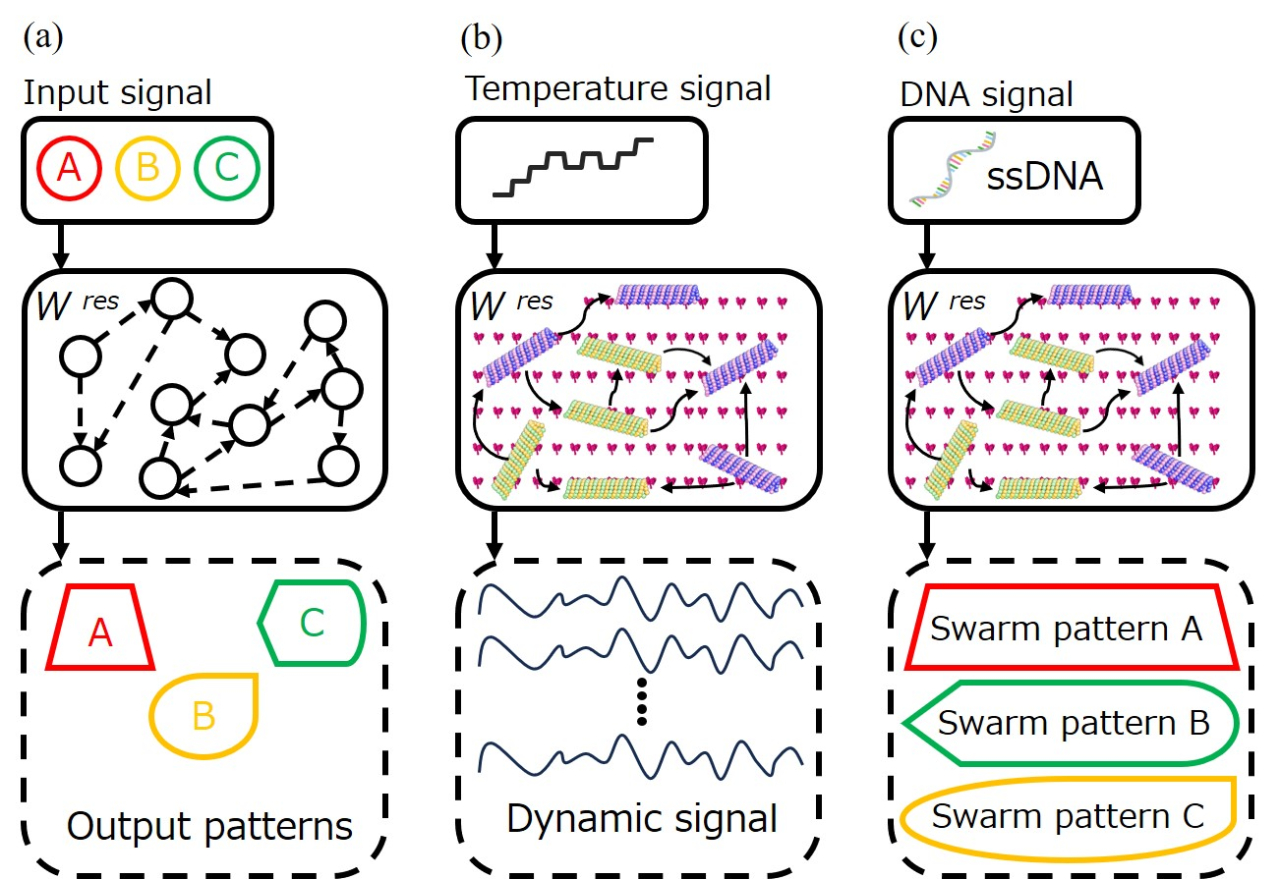O04_02
Physical Reservoir Computing Device Using Active Matter Composed of a Swarm of Biomolecular Motors.
YIMING GONG *1, Gikyo USUKI2, Sidak Singh GREWAL1, Kazuki SADA2, 3, Arif Md. Rashedul KABIR4, Marie TANI1, Masatoshi ICHIKAWA1, Nathanael AUBERT-KATO5, Ibuki KAWAMATA1, Akira KAKUGO1
1Graduate School of Science, Kyoto University
2Graduate School of Chemical Sciences and Engineering, Hokkaido University
3Faculty of Science, Hokkaido University
4Faculty of Science and Engineering, Macquarie University
5Department of Information Sciences, Ochanomizu University
( * E-mail: gong.yiming.66v@st.kyoto-u.ac.jp)
Reservoir Computing (RC) is a pioneering computational architecture that regards the dynamical system (called reservoir) response against inputs as information processing resources. In the case of in silico realization of RC, computational models such as Recurrent Neural Networks without optimized training can be used as a reservoir. If the model has sufficiently complex dynamics, one can map the readout of the reservoir to desired outputs by merely optimizing a small network (output layer), which is placed downstream of the model (Figure 1a). As a result, RC has low training overhead compared with training the whole model using machine learning algorithm.
The concept of RC can be extended from in silico to in vitro realization, which can directly receive physical inputs such as molecules or temperature, and process information for practical application in a physical system. The framework for using complex real-time physical systems as a reservoir is called Physical Reservoir Computing (PRC). Standard problems that PRC can address include memorizing temporal behavior of input signal and classifying inputs into pre-defined patterns.
Among physical systems, swarming, which is characterized by the collective movement and self-organization of agents, has emerged as a suitable candidate of reservoirs. Swarming is known for its capabilities of displaying highly order emergence from local interactions of distributed agents. If we can use chemical information as inputs for a swarming system, typical memory and classification functions of PRC have a potential to develop applications such as retrieving health history and conducting diagnosis.
This research aims to demonstrate a PRC device using biomolecular motors as a reservoir which can respond to inputs such as temperature and DNA signals. For this purpose, we conjugated MTs with DNA, which can interact with each other through DNA hybridization to form swarming structures. We first employ temperature as time-dependent inputs that can affect the dynamical system by influencing the interaction between MTs (Figure 1b). Since MT interactions are controlled by DNA, higher temperature will result in melting DNA hybridization and dissociation of swarming MTs, and vice versa. This temperature-dependent behavior allows the system to respond to time series input of temperature for the memory demonstration of PRC. Next, we employ different types of DNA signals as input to evaluate the performance of the MT swarming PRC for classification problem. Using different single-stranded DNA complementary to the MT-conjugated DNA, the system can form different types of swarm patters. This implies that we can categorize the input by observing the patterns, once the correspondences between inputs and output patters are trained (Figure 1c). The aim of this research to harness MT swarming as PRC system, will lead us to perform practical computational tasks such as diagnostics using molecular system in the future.
